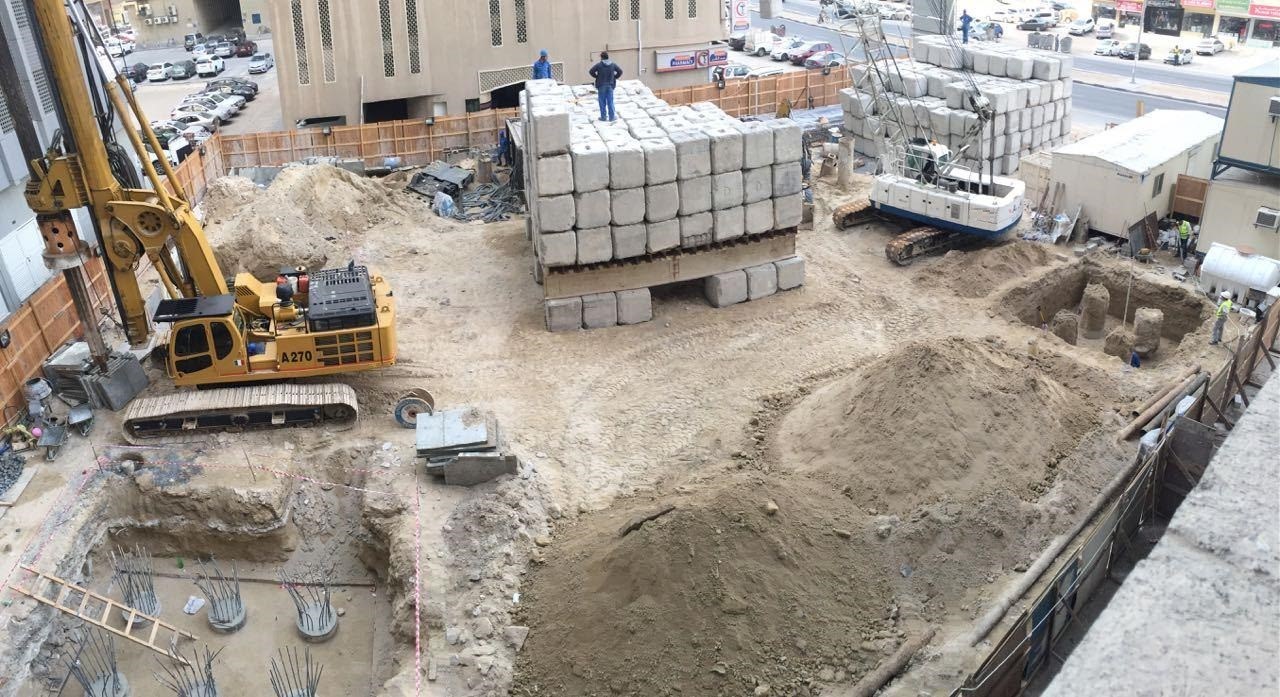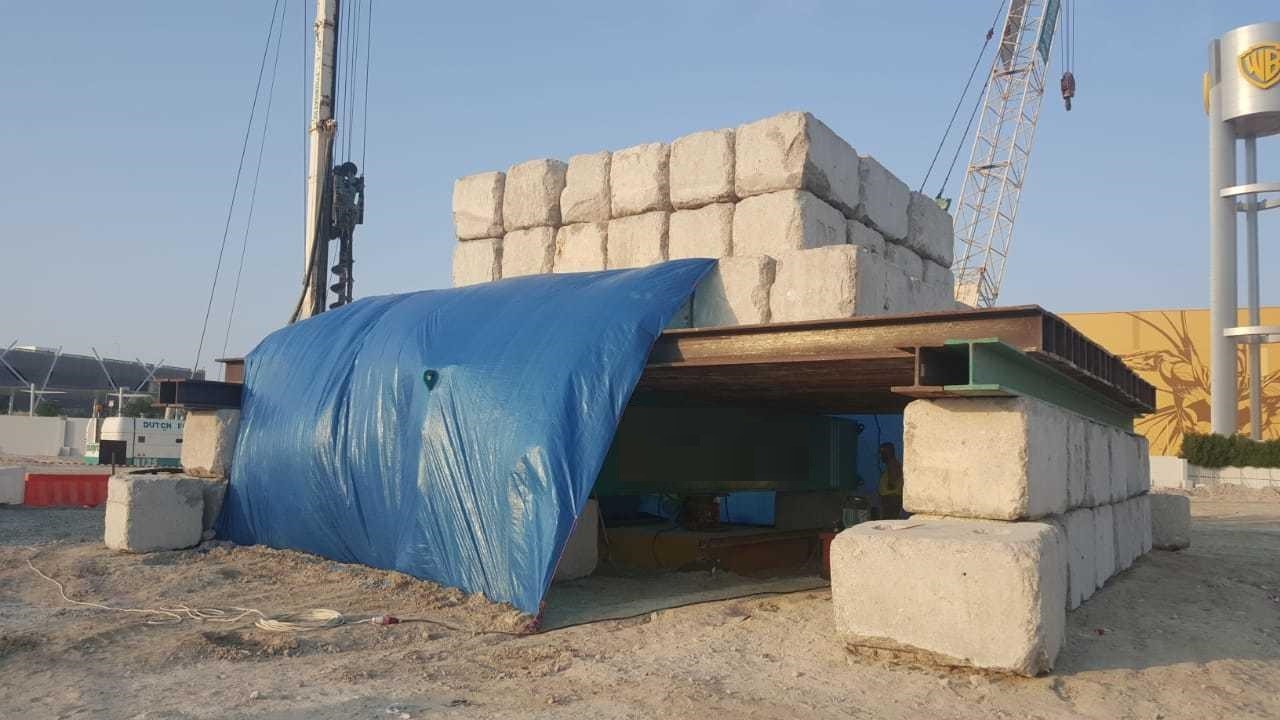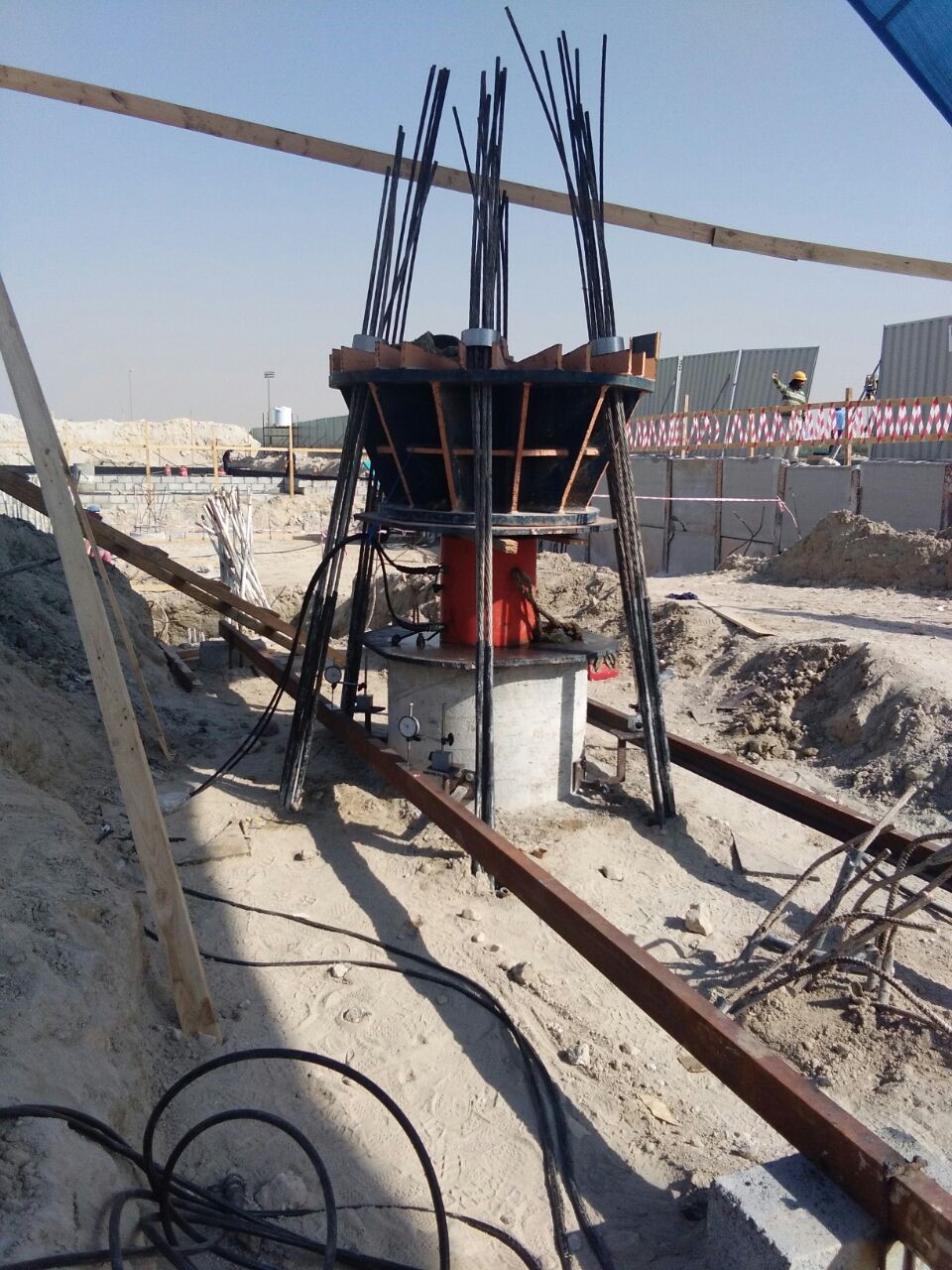STATIC LOAD TESTING
Static load test (SLT) is the most reliable method of determining pile load capacity. It is the most fundamental form of pile load test and is considered as the bench-mark of pile performance. It involves the direct measurement of pile head displacement in
response to a physically applied test load. Testing a pile to failure provides valuable information to the design engineer and is recommended for load tests performed prior to the foundation design or working piles construction. This method is applicable to all
types of piles regardless of their method of installation.Piles can be tested for:
• Compression
• Lateral
• Tension (i.e. uplift)



Static load test by reaction grout anchors
For the SLT the load is most commonly applied via a jack acting against a reaction beam, which is restrained by an anchorage system or by jacking up against a reaction mass (“Kentledge” or dead weight.)
The anchorage system or crown system is usually in the form of Tie back Anchors installed into the ground to provide tension resistance. The nominated test load is usually applied in a series of increments in accordance with the appropriate code, or with a pre-determined load testing specification for a project. Each load increment is sustained for a specified time period, or until the rate of pile movement is less than a nominated value. Static load testing methods are applicable to all pile types, on land or over water, and may be carried out on either production piles or sacrificial trail piles.
Additional to static Load Testing ( SLT), Other pile testings are required and mandatory by local authorities to ensure the integrity and the capability of the piles to carry the design loads. Such piles tests are usually carried out by a third party licensed and approved by local authorities. Pile test reports are the key tools for each type of tests which shall include in details the method of conducting the test, equipment used data
and results which come in the form of values or graphs what so ever. The most common tests are but not limited to:
1. High strain dynamic test
2. Low strain integrity testing known as ( oulse Echo Test)
3. Cross-hole sonic logging
4. Caliper logging
Geotechnical contractor , Soil Improvement
Soil Improvement (Vibro Compaction / Stone Columns) ,(Design and Build)
all types of bored and driven piling works , all types of shoring works ,Soldier Pile Shoring ,
Secant Wall , Diaphragm Wall , Contiguous Wall , Soldier Piles ,Sheet Piles , Steel H-Beams, Shoring Plates
Micro Piles and Ground Anchors
Marine Works:Sheet piling of Cofferdams ,Jetties, Wharves
